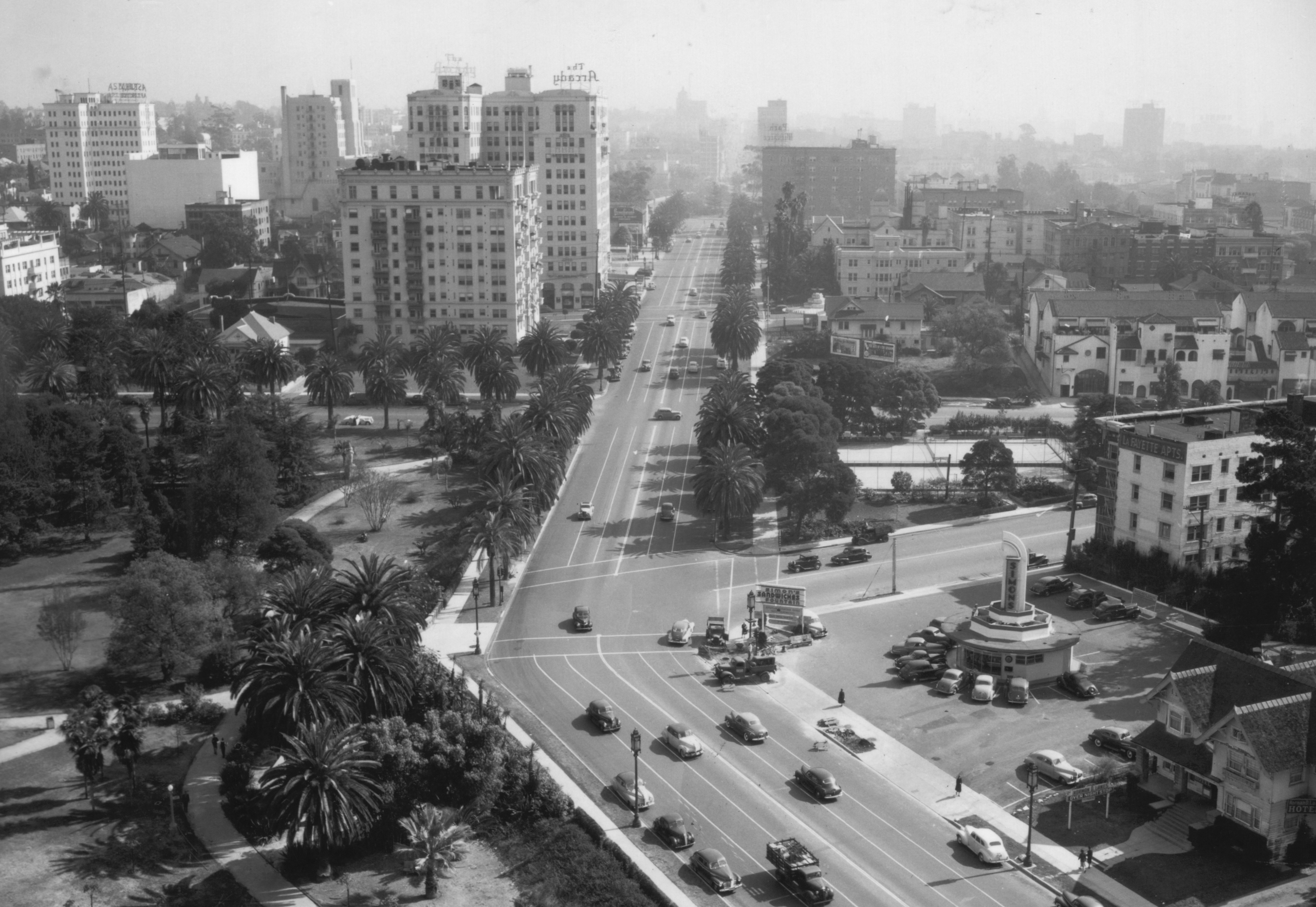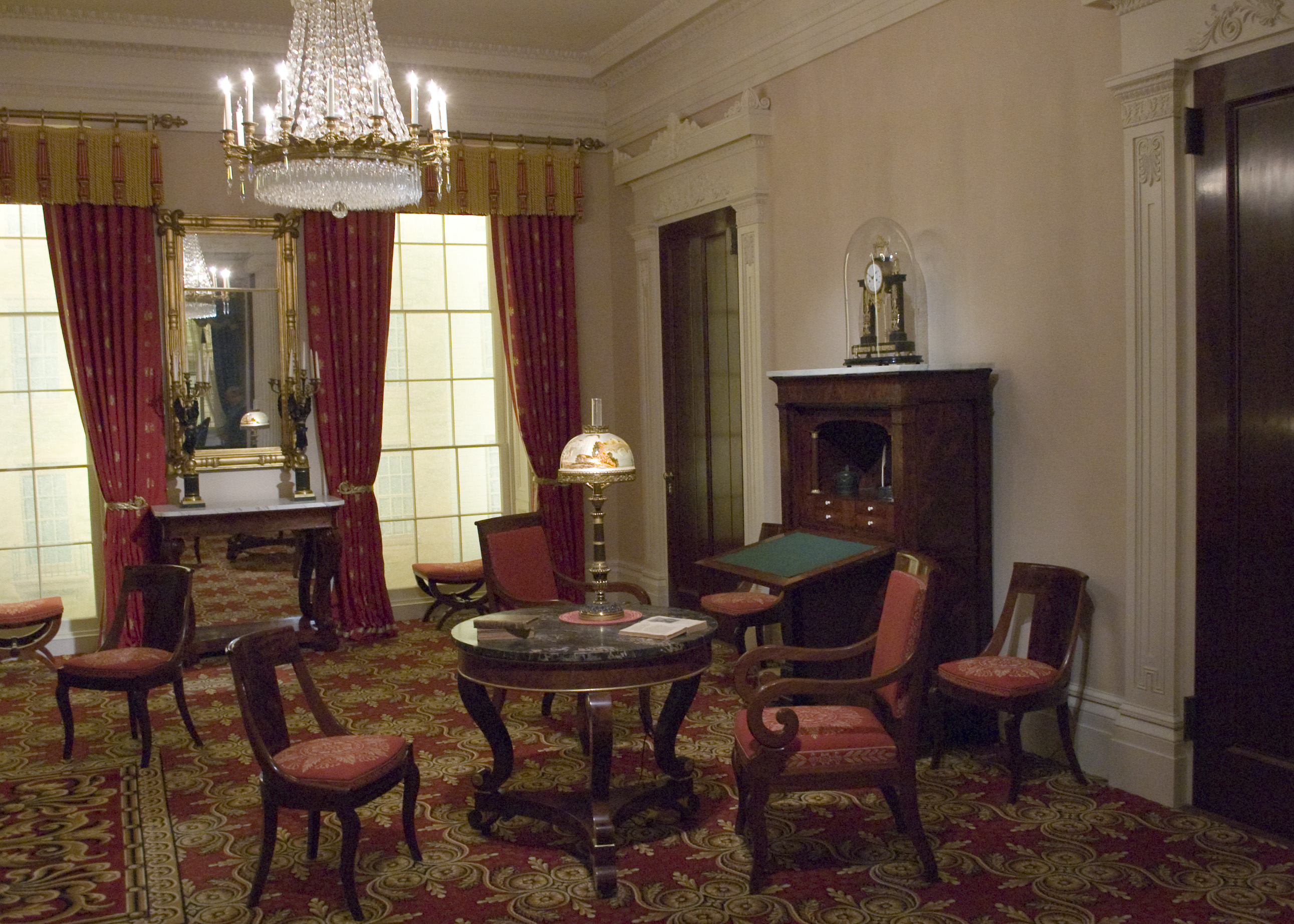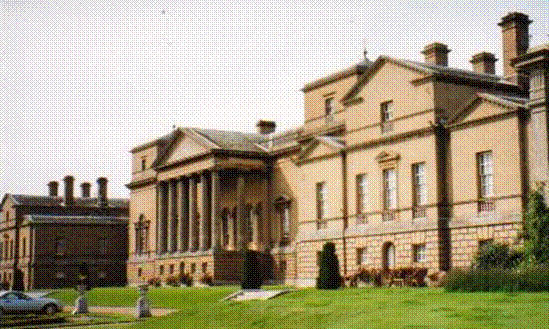|
Westlake, Los Angeles, California
Westlake, also known as the Westlake District, is a residential and commercial neighborhood in Central Los Angeles, California. It was developed in the 1920s, but many of its elegant mansions have been turned into apartments, and many new multiple-occupancy buildings have been constructed. Westlake is a high-density area, with a young and heavily Latino population. It contains many primary and secondary schools. History Early development In 1887, Westlake was referred to as the "southwest quarter" of Los Angeles. The Westlake hills were already "dotted with fine residences, and it is plainly to be seen that the development of this quarter is in its infancy. The Bonnie Brae, Westlake Park and other tracts in the neighborhood have been almost wholly disposed of by the subdividers, and many of the lots have passed into second and third hands, at advancing prices. The Baptist College, now well under way, looms up to the northward." The neighborhood was named for Westlake Park, ... [...More Info...] [...Related Items...] OR: [Wikipedia] [Google] [Baidu] |
Westlake Village, California
Westlake Village is a city in Los Angeles County on its western border with Ventura County. The City of Westlake Village incorporated in 1981 becoming the 82nd municipality of Los Angeles County.Baker, Pam (2002). ''Thousand Oaks Westlake Village: A Contemporary Portrait''. Community Communications, Inc. Page 19. . The population of the city was 8,029 at the 2020 census, down from 8,270 at the 2010 census. The city is named after the master-planned community of Westlake that was later called Westlake Village to avoid confusion with the Los Angeles neighborhood of the same name. With a lake at the center, the community straddles the line between Los Angeles and Ventura counties. Roughly two-thirds of the community was previously annexed into the city of Thousand Oaks. History About 3,000 years ago, Chumash Indians moved into the region and lived by hunting rabbits and other game, and gathering grains and acorns. On-going excavations, archaeological sites, and polychrome r ... [...More Info...] [...Related Items...] OR: [Wikipedia] [Google] [Baidu] |
Wholesale District, Los Angeles
The Wholesale District or Warehouse District in Downtown Los Angeles, California, has no exact boundaries, but at present it lies along the BNSF and Union Pacific Railroad lines, which run parallel with Alameda Street and the Los Angeles River. Except for some ancillary commercial uses, its cityscape is mostly occupied by warehouses and refrigerated storage facilities. This area is known as Central City North in the Los Angeles city zoning map. In early days, Los Angeles Street, to the west, was considered the "heart" of the Wholesale District, which over the years expanded southerly along the same thoroughfare, and, to a lesser extent, northward. Warehouse buildings were also constructed on Alameda Street, and plans were made for a new center at First and Alameda, but it was never brought to fruition. Warehouses were built on San Pedro Street and on Central Avenue. Eventually the district spread farther on the east side of Downtown, and by 1990 it was described as being bounded ... [...More Info...] [...Related Items...] OR: [Wikipedia] [Google] [Baidu] |
Gaylord Apartments
Gaylord is a name of Norman French origin, from the Old French ''gaillard'' meaning "joyful" or "high-spirited". It may refer to: People *Gaylord (given name) Surname * Bill Gaylord (born 1967), British former alpine skier *Charles Gaylord (1936–2009), American martial artist *Chester Gaylord (1899–1984), vocalist *Edith Kinney Gaylord (1916–2001), journalist * Edward Gaylord (Edward L. Gaylord, 1919–2003), owner of ''The Oklahoman'' and founder of the Gaylord Entertainment Company * Edward K. Gaylord (1873–1974), founder of newspaper ''The Oklahoman'' *Frank Gaylord (1925–2018), American sculptor * Glenn Gaylord, American film and television director, producer, and screenwriter * Harvey Gaylord (1904–1983), President of Bell Aerospace * James M. Gaylord (1811–1874), U.S. Representative from Ohio *Jeff Gaylord (born 1958), American professional wrestler * Jim Gaylord (born 1974), American artist * John Gaylord (1797–1874), early Mormon leader *Joseph Gaylord, p ... [...More Info...] [...Related Items...] OR: [Wikipedia] [Google] [Baidu] |
Suite (hotel)
A suite in a hotel or other public accommodation (e.g. a cruise ship) denotes, according to most dictionary definitions, connected rooms under one room number. Hotels may refer to suites as a class of accommodations with more space than a typical hotel room, but technically speaking there should be more than one room to constitute a true suite. In luxury or upscale accommodations, such as Ritz Carlton, InterContinental, Marriott, Westin, Four Seasons, Shangri-La or St. Regis, key features may include multiple rooms. Many independent properties have one or more honeymoon suites. The most luxurious accommodation in a hotel is often called the presidential suite or royal suite. Upper-midscale accommodations, such as Comfort Suites, Hampton Inn & Suites, and Candlewood Suites, may denote suites as one room with more space and furniture than a standard hotel room, and so technically these would not be considered suites of rooms per se. In addition to one or more beds and a bath ... [...More Info...] [...Related Items...] OR: [Wikipedia] [Google] [Baidu] |
Wilshire Boulevard
Wilshire Boulevard is a prominent boulevard in the Los Angeles area of Southern California, extending from Ocean Avenue in the city of Santa Monica east to Grand Avenue in the Financial District of downtown Los Angeles. One of the principal east-west arterial roads of Los Angeles, it is also one of the major city streets through the city of Beverly Hills. Wilshire Boulevard runs roughly parallel with Santa Monica Boulevard from Santa Monica to the west boundary of Beverly Hills. From the east boundary it runs a block south of Sixth Street to its terminus. Wilshire Boulevard is densely developed throughout most of its span, connecting five of Los Angeles's major business districts and Beverly Hills to one-another. Many of the post-1956 skyscrapers in Los Angeles are located along Wilshire; for example, the Wilshire Grand Center, which is the tallest building in California, is located on the Figueroa and Wilshire intersection. One Wilshire, built in 1966 at th ... [...More Info...] [...Related Items...] OR: [Wikipedia] [Google] [Baidu] |
Icebox
An icebox (also called a cold closet) is a compact non-mechanical refrigerator which was a common early-twentieth-century kitchen appliance before the development of safely powered refrigeration devices. Before the development of electric refrigerators, iceboxes were referred to by the public as "refrigerators". Only after the invention of the modern day electric refrigerator did early non-electric refrigerators become known as iceboxes. The terms ''ice box'' and ''refrigerator'' were used interchangeably in advertising as long ago as 1848. Origin The first recorded use of refrigeration technology dates back to 1775 BC in the Sumerian city of Terqa. It was there that the region's King, Zimri-lim, began the construction of an elaborate ice house fitted with a sophisticated drainage system and shallow pools to freeze water in the night. Using ice for cooling and preservation was nothing new at this point, but these ice houses paved the way for their smaller counterpart, the iceb ... [...More Info...] [...Related Items...] OR: [Wikipedia] [Google] [Baidu] |
Murphy Bed
A Murphy bed (also known as a pull-down bed, fold-down bed, or wall bed) is a bed that is hinged at one end to store vertically against the wall, or inside a closet or cabinet. Since they often can be used as both a bed or a closet, Murphy beds may be considered multifunctional furniture. History The name Murphy bed is named after William Lawrence Murphy (1876–1957), an Irish immigrant in New York who wanted to find a creative method of making space in his small apartment. He applied for his first patents around 1900. According to legend, he was wooing an opera singer, but living in a one-room apartment in San Francisco, and the moral code of the time frowned upon a woman entering a man's bedroom. Murphy's invention converted his bedroom into a parlor, enabling him to entertain. Earlier foldup beds had existed, and were even available through the Sears, Roebuck & Co. catalog, but Murphy introduced pivot and counterbalanced designs for which he received a series of patents, in ... [...More Info...] [...Related Items...] OR: [Wikipedia] [Google] [Baidu] |
Card Room
A cardroom or card room is a gaming establishment that exclusively offers card games for play by the public. The term poker room is used to describe a dedicated room in casinos that is dedicated to playing poker and in function is similar to a card room. Such rooms typically do not offer slot machines or video poker, or other table games such as craps or roulette as found in casinos. However, a casino will often use the term "cardroom" or "poker room" (usually the latter) to refer to a separate room that offers card games where players typically compete against each other, instead of against "the house". Overview In the United States, stand-alone cardrooms are typically the result of local or state laws and regulations, which often prohibit full-fledged casino gambling. This was typically the case in California until the advent of casino gambling offered by Native American tribes in the 1990s, though card rooms continue to flourish and even expand there. Since games played in c ... [...More Info...] [...Related Items...] OR: [Wikipedia] [Google] [Baidu] |
Parlor
A parlour (or parlor) is a reception room or public space. In medieval Christian Europe, the "outer parlour" was the room where the monks or nuns conducted business with those outside the monastery and the "inner parlour" was used for necessary conversation between resident members. In the English-speaking world of the 18th and 19th century, having a parlour room was evidence of social status. Etymology In the early 13th century, parlor originally referred to a room where monks could go to talk, derived from the Old French word ''parloir'' or ''parler'' ("to speak"), it entered the English language around the turn of the 16th century. History The first known use of the word to denote a room was in medieval Christian Europe, when it designated the two rooms in a monastery where clergy, constrained by vow or regulation from speaking otherwise in the cloister, were allowed to converse without disturbing their fellows. The "outer parlour" was the room where the monks or nun ... [...More Info...] [...Related Items...] OR: [Wikipedia] [Google] [Baidu] |
Servants' Quarters
Servants' quarters are those parts of a building, traditionally in a private house, which contain the domestic offices and staff accommodation. From the late 17th century until the early 20th century, they were a common feature in many large houses. Sometimes they are an integral part of a smaller house—in the basements and attics, especially in a town house, while in larger houses they are often a purpose-built adjacent wing or block. In architectural descriptions and guidebooks of stately homes, the servants' quarters are frequently overlooked, yet they form an important piece of social history, often as interesting as the principal part of the house itself. Origins Before the late 17th century, servants dined, slept and worked in the main part of the house with their employers, sleeping wherever space was available. The principal reception room of a house—often known as the great hall—was completely communal regardless of hierarchy within the household. Before th ... [...More Info...] [...Related Items...] OR: [Wikipedia] [Google] [Baidu] |
Cue Sports
Cue sports are a wide variety of games of skill played with a cue, which is used to strike billiard balls and thereby cause them to move around a cloth-covered table bounded by elastic bumpers known as . There are three major subdivisions of games within cue sports: *Carom billiards, played on tables without , typically 10 feet in length, including straight rail, balkline, one-cushion carom, three-cushion billiards, artistic billiards, and four-ball *Pool, played on six-pocket tables of 7-, 8-, 9-, or 10-foot length, including among others eight-ball (the world's most widely played cue sport), nine-ball (the dominant professional game), ten-ball, straight pool (the formerly dominant pro game), one-pocket, and bank pool * Snooker, English billiards, and Russian pyramid, played on a large, six-pocket table (dimensions just under 12 ft by 6 ft), all of which are classified separately from pool based on distinct development histories, player culture, rules, and ... [...More Info...] [...Related Items...] OR: [Wikipedia] [Google] [Baidu] |
Mission Architecture
The Mission Revival style was part of an architectural movement, beginning in the late 19th century, for the revival and reinterpretation of American colonial styles. Mission Revival drew inspiration from the late 18th and early 19th century Spanish missions in California. It is sometimes termed California Mission Revival, particularly when used elsewhere, such as in New Mexico and Texas which have their own unique regional architectural styles. In Australia, the style is known as Spanish Mission. The Mission Revival movement was most popular between 1890 and 1915, in numerous residential, commercial and institutional structures, particularly schools and railroad depots. Influences All of the 21 Franciscan Alta California missions (established 1769–1823), including their chapels and support structures, shared certain design characteristics. These commonalities arose because the Franciscan missionaries all came from the same places of previous service in Spain and colo ... [...More Info...] [...Related Items...] OR: [Wikipedia] [Google] [Baidu] |

.jpg)









